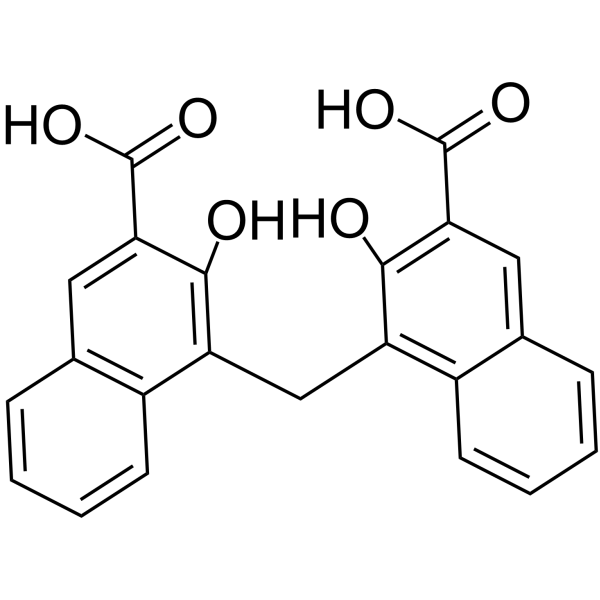Mind your salts: when the inactive constituent isn't.
Richard R Neubig
Index: Mol. Pharmacol. 78(4) , 558-9, (2010)
Full Text: HTML
Abstract
Many pharmacological agents include "inactive" constituents that are used to alter the solubility, stability, or pharmaceutical properties of a drug. These "salts" are often ignored, and the "active ingredient" gets all of the attention. Pamoic acid (4-[(3-carboxy-2-hydroxynaphthalen-1-yl)methyl]-3-hydroxynaphthalene-2-carboxylic acid) has been used in formulations of several drugs as pamoate salts. This Perspective highlights an Accelerated Communication in this issue (p. 560) that identifies pamoic acid as a potent activator of the orphan G protein-coupled receptor GPR35. This effect may contribute to the pharmacological actions of some agents that are prepared as pamoate salts. Thus, pharmacologists, regulators, and clinicians should "mind their salts" in considering differences among supposedly equivalent agents.
Related Compounds
| Structure | Name/CAS No. | Molecular Formula | Articles |
|---|---|---|---|
 |
Pamoic acid
CAS:130-85-8 |
C23H16O6 |
|
Long-acting atypical antipsychotics: characterization of the...
2014-08-01 [Pharm. Res. 31(8) , 2065-77, (2014)] |
|
Identification of small-molecule antagonists that inhibit an...
2004-12-21 [Proc. Natl. Acad. Sci. U. S. A. 101 , 17622-17627, (2004)] |
|
Formation of stable nanocarriers by in situ ion pairing duri...
2013-01-07 [Mol. Pharm. 10(1) , 319-28, (2013)] |
|
Identification and purity determination of benzathine and em...
[J. Chromatogr. A. 463(2) , 469-73, (1989)] |
|
Identification of small molecule synthetic inhibitors of DNA...
2004-09-17 [J. Biol. Chem. 279(38) , 39736-44, (2004)] |